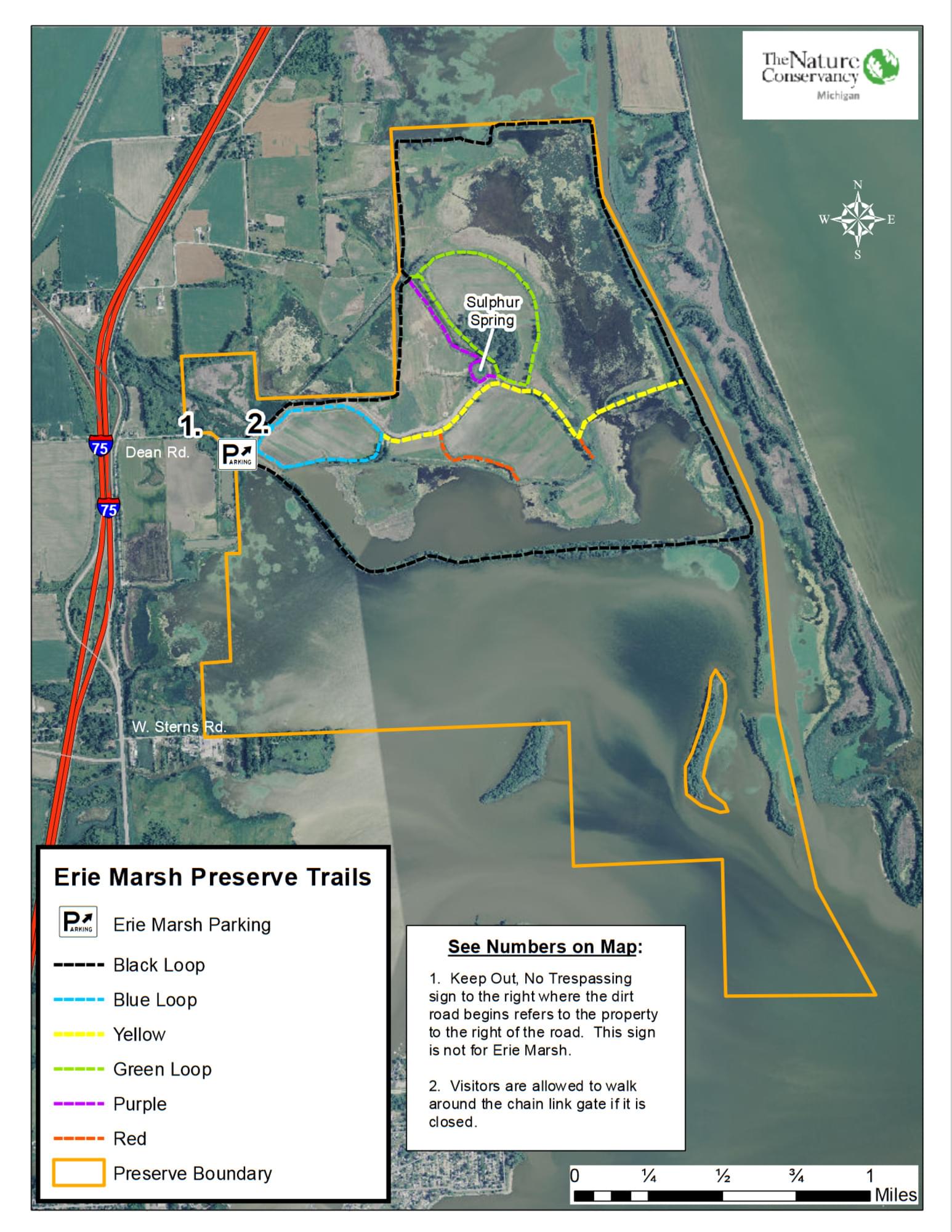Erie Marsh Preserve/Gun Club (no access Sep 1-Dec 15)
Erie Marsh Preserve/Gun Club (no access Sep 1-Dec 15)
Erie, Michigan 48133
Erie Marsh Preserve Official WebsiteErie Marsh Preserve map
About Erie Marsh Preserve
See all hotspots at Erie Marsh Preserve
Erie Marsh is one of the largest coastal wetlands on Lake Erie, supporting numerous animals and plants that would otherwise be hard-pressed to find suitable habitat. The most significant feature of this area is its role as a migratory and nesting area for shorebirds, waterfowl, land birds, and in the fall, raptors. It also harbors some of Michigan’s few remaining colonies of American lotus, and swamp rose-mallow, both listed as state-threatened.
In 2006, Erie Marsh Preserve became a privately-owned component of the Detroit River International Wildlife Refuge, established in 2001 as North America’s first International Wildlife Refuge. The refuge, which includes islands, coastal wetlands, inland marshes, shoals, and riverfront lands along 48 miles of the Detroit River and western Lake Erie, protects habitat for 65 species of fish, 29 species of waterfowl, and 300 species of migratory birds in Michigan and Ontario, Canada. Erie Marsh Preserve is managed through a collaboration of The Nature Conservancy, U.S. Fish and Wildlife Service, and other partners.
Be advised that while the preserve is open, a multi-year wetland construction and restoration project is underway. During your visit, you may encounter areas of the preserve that are closed off to the public for safety reasons. We appreciate your understanding and cooperation while we work to restore one of the largest remaining coastal wetlands on Lake Erie.
Many dabbling ducks, shorebirds, and marsh-loving songbirds can be seen in March and early April as they rest and refuel on their way to northern breeding grounds for the summer. They will return to this site in the fall on their way back to their Latin American and Caribbean winter homes. The marsh also provides a summer range for the great egret, great blue heron and black-crowned night heron.
Dress warmly for spring visits to this preserve as the wind coming off Lake Erie can be brutally cold. Be prepared for muddy and uneven terrain walking along the series of dikes. Be sure to bring along binoculars or a spotting scope if you have one. Closure of certain trails is possible during eagle nesting periods, therefore watch for posted closure signs.
